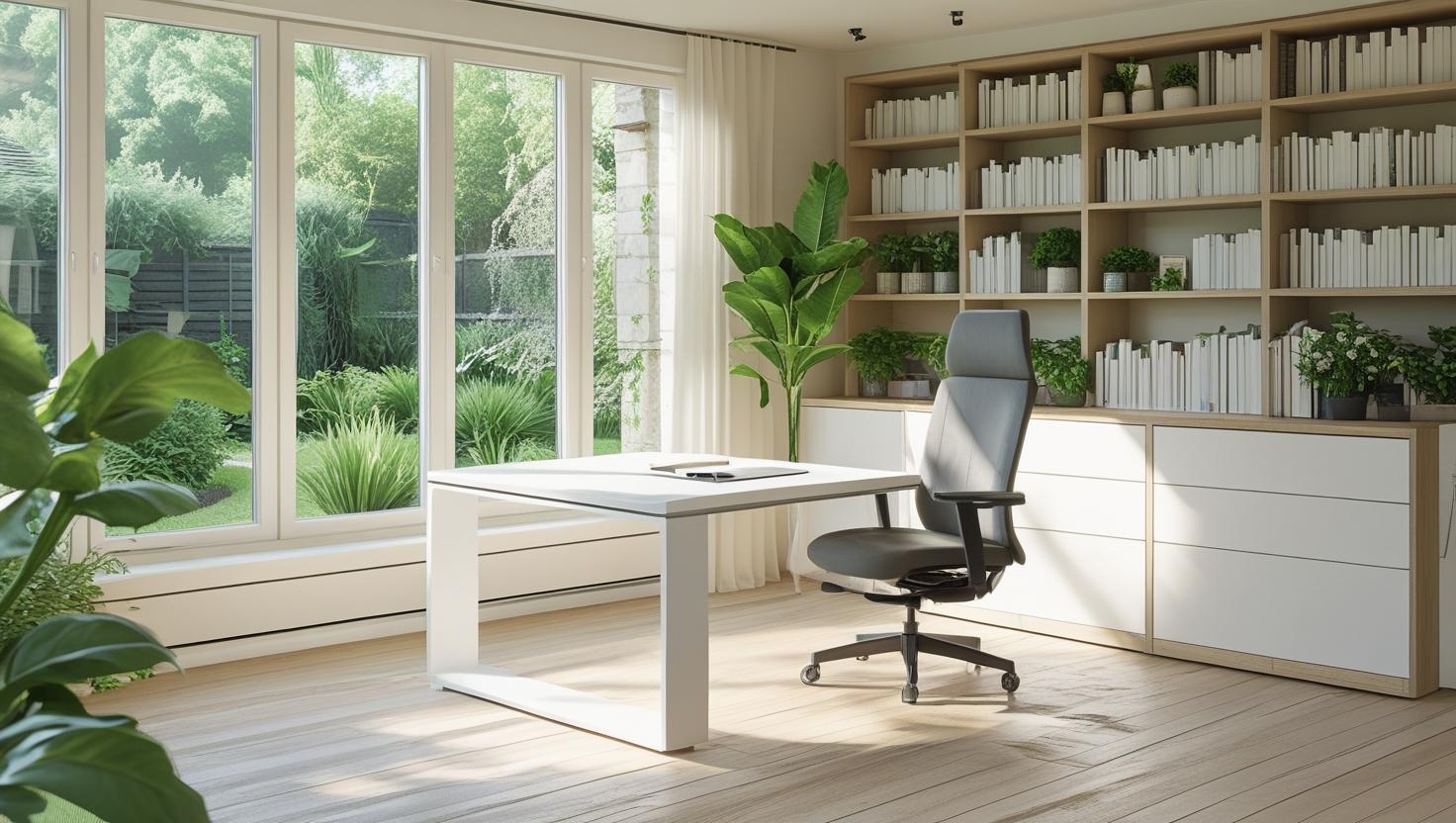
As remote work becomes a permanent part of modern life, more people are realising that their home office setup has a direct impact on comfort, health, and productivity. While it’s tempting to work from the couch or a dining chair, doing so for long periods can lead to strain, fatigue, and even chronic pain. That’s where ergonomics comes in — the science of designing a workspace that supports your body’s natural movements.
Creating an ergonomic home office isn’t about luxury; it’s about functionality, focus, and long-term well-being.
Why Ergonomics Matters
Ergonomics focuses on optimising your workspace to reduce physical stress and improve efficiency. When your chair, desk, monitor, and accessories are positioned correctly, your body remains in a neutral posture — meaning your joints are aligned, your muscles are relaxed, and your circulation flows freely.
Poor ergonomics, on the other hand, can cause a host of problems:
- Back and neck pain from hunching or slouching
- Wrist strain from incorrect keyboard positioning
- Eye fatigue from screens placed too high or low
- Reduced focus due to discomfort or poor posture
Over time, these issues can evolve into repetitive strain injuries (RSI) or musculoskeletal disorders, which are increasingly common among remote workers.
The Foundation: Ergonomic Office Furniture
A well-designed workspace starts with the right ergonomic office furniture. Investing in furniture that adapts to your body rather than forcing your body to adapt to it makes all the difference.
Ergonomic chairs provide essential lumbar support, adjustable seat height, and armrests that reduce shoulder tension. The ideal chair encourages movement throughout the day and allows you to maintain a natural curve in your spine.
Height-adjustable desks or sit-stand desks are another game-changer. Alternating between sitting and standing helps reduce stiffness, improves circulation, and keeps energy levels consistent. When paired together, an ergonomic chair and desk form the foundation of a healthier, more productive workspace.
Monitor and Screen Positioning
Even the best chair and desk won’t help if your screen isn’t correctly placed. Ideally, your monitor should sit at eye level, about an arm’s length away. The top third of the screen should align with your eyes so you’re not constantly looking down or craning your neck.
For laptop users, a simple laptop stand or an external monitor can help achieve this alignment. This adjustment prevents neck and shoulder pain while improving focus during long work sessions.
Keyboard and Mouse Setup
Your hands and wrists should remain in a neutral position when typing — elbows close to your body and wrists straight. A wrist rest or an ergonomic keyboard can make a noticeable difference. Similarly, a contoured mouse that fits the natural shape of your hand reduces unnecessary tension.
Small changes like these not only increase comfort but also prevent repetitive strain injuries that often develop over time.
Lighting and Environment
Ergonomics isn’t limited to posture and equipment. The overall environment of your workspace also affects comfort and performance. Natural light helps regulate your body’s internal clock and reduces eye strain. If your workspace lacks daylight, invest in adjustable LED lighting that mimics natural brightness.
Additionally, keep your workspace clutter-free and ensure the temperature is comfortable — an organised, well-lit environment supports both focus and physical ease.
Movement and Micro-Breaks
Even with perfect ergonomics, sitting or standing still for hours isn’t ideal. Regular movement is crucial. Try the “20-8-2 rule”: for every 30 minutes of work, spend 20 minutes sitting, 8 minutes standing, and 2 minutes walking or stretching.
Gentle stretches for your neck, wrists, and shoulders can significantly reduce stiffness and improve blood flow. Many professionals find that incorporating these micro-breaks throughout the day boosts both comfort and productivity.
Building a Long-Term Habit of Comfort
The goal of ergonomics isn’t to make you think about posture all day — it’s to create a workspace where comfort and productivity happen naturally. Once your furniture, equipment, and layout are properly adjusted, your body will naturally align itself into healthier positions.
By choosing quality ergonomic office furniture, setting up your workstation thoughtfully, and incorporating movement into your day, you’ll not only prevent pain but also enhance focus, energy, and overall work satisfaction.
Conclusion
A home office should be a space that supports both your body and your workflow. Ergonomics bridges that gap, turning an ordinary desk setup into a place where you can work efficiently and comfortably for years to come.
Whether you’re redesigning your workspace or just making a few small upgrades, prioritising ergonomic office furniture is one of the smartest investments you can make in your health, comfort, and productivity.
Leave a Reply